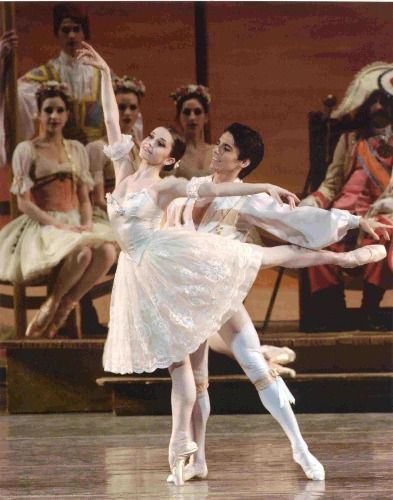New York City Ballet / New York State Theater, Lincoln Center, NYC / January 6 – February 29, 2004
The evening before Valentine’s Day, Megan Fairchild, whose charming looks and diminutive stature echo her surname, made a notable local debut as Swanilda in the New York City Ballet’s Balanchine-Danilova Coppélia and was promoted to the rank of soloist. Not a bad day for a nineteen-year-old who joined the corps de ballet less than a year and a half ago.

What do we know about Fairchild? She trained primarily in her native Salt Lake City, at the school associated with Ballet West. In her subsequent brief sojourn at the School of American Ballet, the NYCB’s hothouse, she copped the academy’s highest award. Once in the company, she stood out almost immediately for her appeal and her technical prowess; she’s extraordinarily swift, strong, clear, and daring. Moreover, she’s now desperately needed as a partner for Joaquin De Luz, the tiny fireball recently imported from American Ballet Theatre, who played Franz to her Swanilda and will be paired with her in the Bluebird pas de deux in the upcoming two-week run of The Sleeping Beauty.
Fairchild has the face of a pretty child, all ingenuous sweetness and joy. What’s more, with its huge, widely spaced eyes, it’s an eloquent stage face. True, her knees seem slightly knobbly, and her feet (as well as hands) are disproportionately long for a person her size, yet every seasoned balletomane knows that the better the dancer, the less deviations from the prevailing classical ideal seem to matter. Being built on such a petite scale may exclude Fairchild from ballerina roles requiring physical grandeur, but her future is assured as a virtuoso and a soubrette. More important than anatomy, at the moment, is Fairchild’s mettle—not just her technical virtuosity, which is formidable, but her appetite for dancing. She seems confident, fearless, elated at having come into what is clearly her rightful kingdom, and of course she dances much larger than her size.
It remains to be seen what, if anything, lies below this surface. In the two casts of Coppélia that I saw, the main roles—Swanilda, Franz, and Dr. Coppélius—have been reduced to near-caricature. Watching them, I thought, like Alice, “You’re nothing but a pack of cards!” The dancers who originated these roles—Patricia McBride, Helgi Tomasson, and Shaun O’Brien—gave them a deep human dimension that in no way diminished the ballet’s bright comedy but, rather, enhanced it. The present production lacks that depth, just as it lacks wit and, most significant, the contrast between two neighboring worlds: that of the village square on which the sun shines perpetually, guaranteeing happy endings, and that of Dr. Coppélius’s workshop—dark, obsessive, and grotesque. Fairchild can’t be expected to enlarge her portrayal of Swanilda until she’s made aware of the subtle matrix in which the character operates. She has already earned her promotion; in terms of sheer dancing, her work is exhilarating. Now she needs the kind of staging and coaching that will encourage her to develop into an artist.
Photo credit: Paul Kolnik: Megan Fairchild and Joaquin De Luz in George Balanchine’s Coppélia
© 2004 Tobi Tobias



